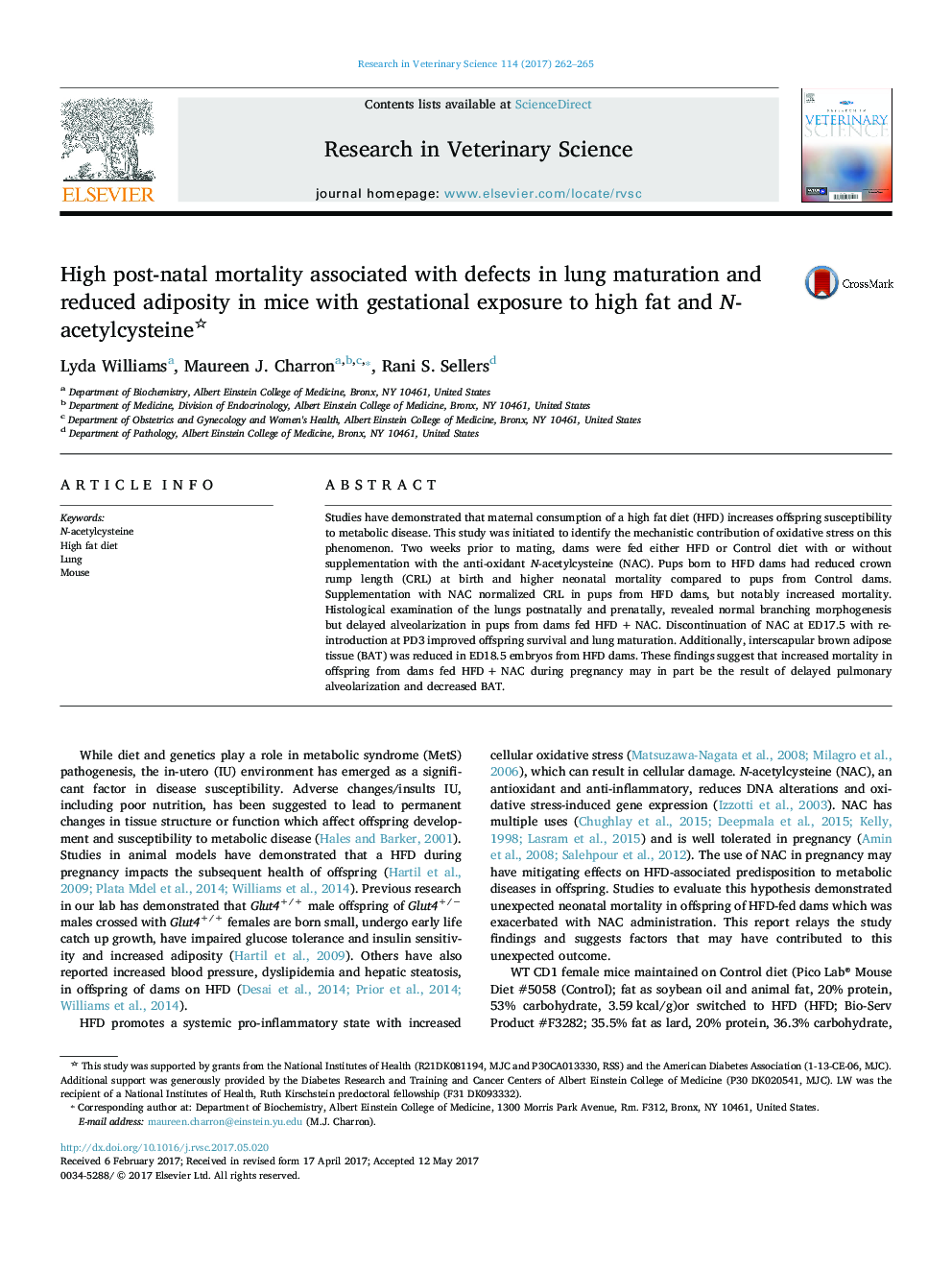| Article ID | Journal | Published Year | Pages | File Type |
|---|---|---|---|---|
| 5543907 | Research in Veterinary Science | 2017 | 4 Pages |
Abstract
Studies have demonstrated that maternal consumption of a high fat diet (HFD) increases offspring susceptibility to metabolic disease. This study was initiated to identify the mechanistic contribution of oxidative stress on this phenomenon. Two weeks prior to mating, dams were fed either HFD or Control diet with or without supplementation with the anti-oxidant N-acetylcysteine (NAC). Pups born to HFD dams had reduced crown rump length (CRL) at birth and higher neonatal mortality compared to pups from Control dams. Supplementation with NAC normalized CRL in pups from HFD dams, but notably increased mortality. Histological examination of the lungs postnatally and prenatally, revealed normal branching morphogenesis but delayed alveolarization in pups from dams fed HFDÂ +Â NAC. Discontinuation of NAC at ED17.5 with re-introduction at PD3 improved offspring survival and lung maturation. Additionally, interscapular brown adipose tissue (BAT) was reduced in ED18.5 embryos from HFD dams. These findings suggest that increased mortality in offspring from dams fed HFDÂ +Â NAC during pregnancy may in part be the result of delayed pulmonary alveolarization and decreased BAT.
Related Topics
Life Sciences
Agricultural and Biological Sciences
Animal Science and Zoology
Authors
Lyda Williams, Maureen J. Charron, Rani S. Sellers,
